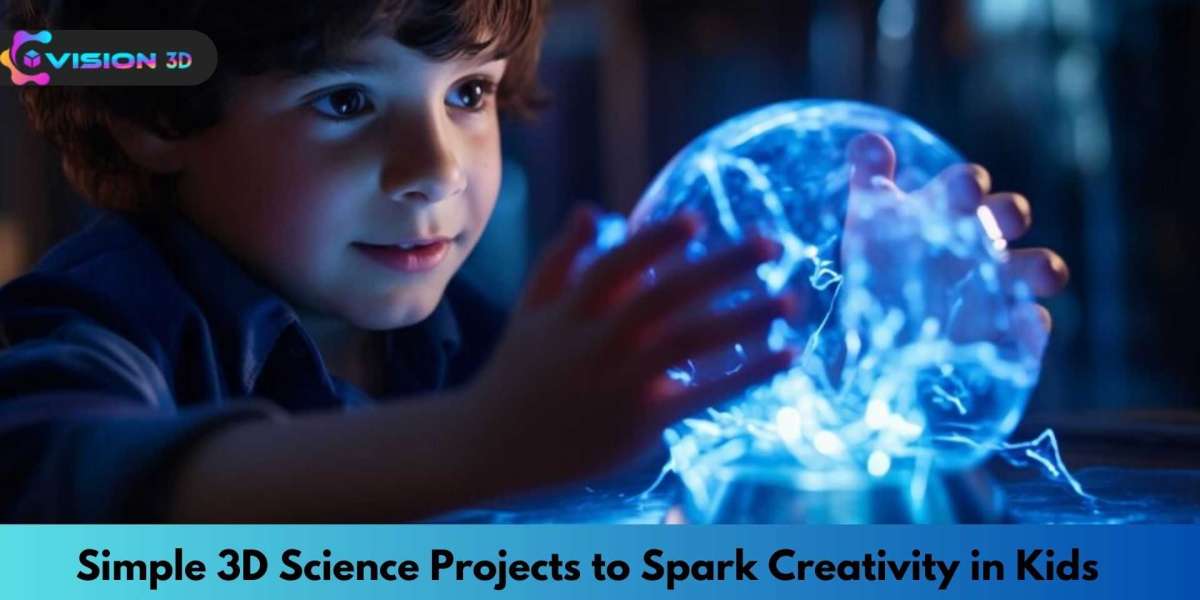Associating students with science via in-hand projects can light up their creativity and curiosity. Easily 3D science projects not only offer a funny pattern but also assist kids reliably in knowing complicated methods. In this write-up, we browse multiple predictive and accessible a 3D Hologram project explanation for Science that can bring young minds.
The Importance of 3D Hologram Project Explanation
Why 3D?
A 3D Science project learning enables children to handle and observe scientific methods, making conceptual techniques more solid. This reach serves different learning patterns, physical learners grow when can create and touch, whereas visual learners profit from seeking structures in three dimensions.
Benefits of Hands-On Projects
- Improves Creativity-Creating models promotes children to think outside of the box.
- Enhances Problem-Solving Skills -Handling troubles during creation features complex thinking.
- Promotes Teamwork-A Hologram project explanation for students can be completed in groups, supporting interaction and communication.
Simple 3D Science Projects
1) 3D Model of the Solar System
Materials Needed
Paints or markers
Styrofoam balls in different sizes
Wooden sticks or skewers
Base such as cardboard for the model.
Instructions
- Demonstrate a planet by painting each Styrofoam ball. Utilize various sizes and colours to showcase their engaging sizes. It can be achieved through a Hologram project explanation.
- Put wooden skewers into the base while being dry. Order then to depict the distances between planets.
- Connect the planets to the skewers at different heights to curate a 3D impact.
Learning Outcome
Kids know about the engaging planets’ sizes, distances between them, and the solar system’s structure.
2) Crystal Growing Experiment
Materials Needed
Water
A clear container
Sugar or salt
A Stick or string
Instructions
- Mix salt or sugar in boiling water until not more will be the same.
- Drizzle the solution into a transparent container.
- Knot a string to a stick and position it around the container’s top so the string drifts into the formula.
- Enable it to remain unbalanced for multiple days until crystal develops on the string.
Learning Outcome
This 3D Hologram Project explanation educates you about chemical reactions, saturation points, and crystallization.
3) Building a Simple Bridge
Materials Needed
Glue
Weights such as coins
Popsicle straws or sticks
Instructions
- Tailor a bridle on paper before creating it.
- Utilize popsicle straws or sticks to build the bridge as per your design.
- Examine its potential by gradually attaching weights until it destroys.
Learning Outcome
Students learn about weight distribution, engineering principles and structural integrity.
4) Creating a Volcano
Materials Needed
Vinegar
Basking soda
Food colouring
Tray to catch overflow
A plastic container or bottle
Instructions
- Position the plastic bottle on a tray and load it with baking soda.
- Bundle Vinegar with food colouring in a different cup.
- Spill the vinegar solution in the bottle and view it as streams.
Learning Outcome
This Hologram project explanation for students signifies geological procedures and chemical reactions.
5) Building a Model Cell
Materials Needed
Multiple candies to demonstrate organelles
Gelatin for cytoplasm
A transparent container
Instructions
- Formulate Gelatin as per packaging information and spill it into the container.
- Utilize candies to demonstrate various organelles once placed like gummy bears for mitochondria.
- Brand each part of your project cell.
Learning Outcome
Kinds obtain a cell structure overview and operate in biology.
6) Paper Mache Earth Model
Materials Needed
Flour and Water for paste
Balloons
Paints
Newspaper cuttings
Instructions
- Fill a balloon to create your Earth project base.
- Combine water and flour to develop a paste and insert newspaper strips into it.
- Cover the balloon with strips and allow it to dry completely.
- Boom the paint and balloon with your Earth project with oceans and continents once getting dry.
Learning Outcome
This Hologram project explanation educates about Earth’s Environmental Science and Geography.
Conclusion
Such convenient 3D Science projects are not only knowledgeable but also funny methods for students to interact with scientific methods. Students maintain complex skills like teamwork, creativity and problem-solving for a long duration by including in-hand activities in learning. These models develop curiosity and motivate young scientists to do experiments or create projects.













